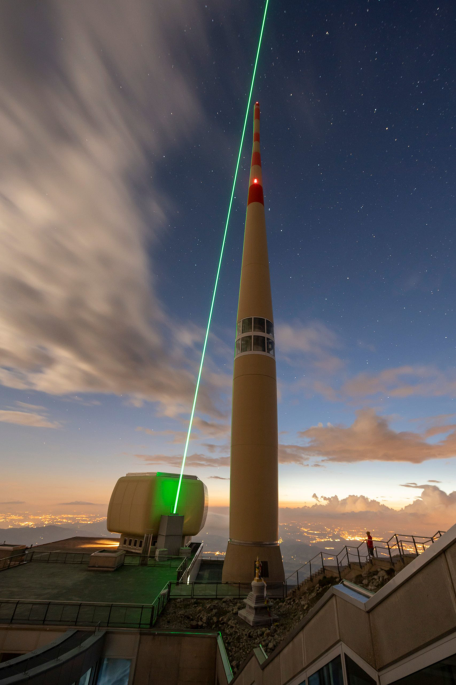- cross-posted to:
- technology@lemmy.world
- cross-posted to:
- technology@lemmy.world
Swiss scientists successfully diverted lightning with a powerful laser::Lightning discharges between charged clouds and the Earth’s surface are responsible for considerable damages and casualties. It is therefore important to develop better protection methods in addition to the traditional Franklin rod. Here we present the first demonstration that laser-induced filaments—formed in the sky by short and intense laser pulses—can guide lightning discharges over considerable distances. We believe that this experimental breakthrough will lead to progress in lightning protection and lightning physics. An experimental campaign was conducted on the Säntis mountain in north-eastern Switzerland during the summer of 2021 with a high-repetition-rate terawatt laser. The guiding of an upward negative lightning leader over a distance of 50 m was recorded by two separate high-speed cameras. The guiding of negative lightning leaders by laser filaments was corroborated in three other instances by very-high-frequency interferometric measurements, and the number of X-ray bursts detected during guided lightning events greatly increased. Although this research field has been very active for more than 20 years, this is the first field-result that experimentally demonstrates lightning guided by lasers. This work paves the way for new atmospheric applications of ultrashort lasers and represents an important step forward in the development of a laser based lightning protection for airports, launchpads or large infrastructures. A terawatt laser filament is shown to be able to guide lightning over a distance of 50 m in field trials on the Säntis mountain in the Swiss Alps.



It should not be stored in a battery if they do this. Atleast not a traditional one. Perhaps if they can manage the batteries based on heat trapped in sand it’d be cool. Or if they use it to break h2o bonds. something of that sort.
The problem with a battery is there’s no known technology that can accept that much energy that quickly. Five gigajoules is a lot of energy, it would be a massive battery and would have to accept a full charge in a tiny fraction of a second.
It might be possible with a capacitor array. At a hundred megavolts a capacitor array would not have to be terribly large to store five gigajoules. The initial problem is insulation. With that kind of voltage everything would have to be housed in a vacuum since any exposure or contact could provide a path to ground. Then there’s the amperage the capacitor has to handle in charging. A hundred thousand Amps over any conventional conductor is going to vaporize it. Maybe super conductors could be employed.
Say you get past those challenges and you have a capacitor array storing charge at a hundred megavolts. You have to convert it to useable voltage somehow. You need a step down converter that can handle voltage that high. Now you have a whole new set of electrical engineering obstacles.
It might be feasible without sci-fi technology, but then would it be worth the development and deployment cost.